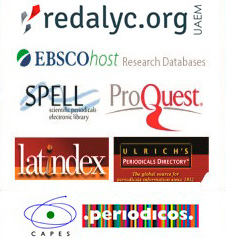DONATE ALFREDO'S ORGANS? NO WAY!
DOI:
https://doi.org/10.14210/alcance.v29n3(Set/Dez).p315-327Keywords:
Service Quality Management, People Management, Organ donation-transplantation, Family refusal to donate, Peoples’ role in service deliveryAbstract
Dilemma: The case portrays the difficult decision of Alfredo's family to donate or not the organs of the beloved deceased. This decision is influenced by the quality of services provided by the hospital to Alfredo's family and the ability of frontline professionals to deal with the family at such a sensitive time. Jorge, the State Transplant Center (CET) coordinator, needs to act to increase the number of "yes" to organ donations from deceased donors. But what to do? How to develop the skills of professionals who worked at CET? How to improve the quality of services provided to the families of potential donors?
Educational objectives: The case was written with the pedagogical purpose of working in the classroom relevant concepts in the field of services management and quality:
- the concept and the five dimensions of perceived quality in services discussed by Parasuraman (reliability, promptness, security, empathy, tangibles);
- the three dimensions for assessing the quality of health services proposed by Donabedian (structure, process, result);
- the importance of the people for delivering quality services in adverse and high-contact contexts, considering the four distinctive characteristics of services conceived by Kotler (intangibility, inseparability, perishability, variability), the “moment of truth” concept introduced by Jan Carlzon, and the “satisfaction mirror” of providers-clients.
Contextualization: The dilemma occurs in the hospital where Alfredo is hospitalized, with brain death.
Main theme: the concept of quality in services and the importance of people for delivering quality services in adverse and high-contact contexts.
Audience: Postgraduate students – executive training, master's or doctorate.
Originality/value: The case is original because it discusses concepts of service quality management in adverse contexts and high emotional distress, such as the case of organ donation from deceased donors.
References
Ali, M. (2018). How patients perceive healthcare services: A case of Ayub Teaching Hospital, Abbottabad – Pakistan. SERV Service QUAL Quality. International Journal of Healthcare Management, 11(1), 52-59.
Berry, L., Danaher, T., Chapman, R., & Awdish, R. (2017). Role of kindness in cancer care. Journal of Oncology Practice, 13(11), 744-751.
Carlzon, J. (1994). A hora da verdade. Rio de Janeiro: Cop.
Chang, H. and Wang, Y. (2011) 'Assessing the Performance of e-Health Service', Paper Presented at the 2011 International Joint Conference on Service Sciences, 25-27 May 2011. Taipei, Taiwan.
Donabedian, A. (1980). Explorations in quality assessment and monitoring: The definition of quality and approaches to its assessment (pp. 77-125). Ann Arbor, MI: Health Administration Press.
Donabedian, A. (1988). The quality of care. How can it be assessed? JAMA, 260(12), 1743-1748.
Fuentes, P., Bravo, M., & Guillén, M. (2019). Calidad asistencial percibida y satisfacción de las personas sordas con la atención primaria de un Área de Salud de la Región de Murcia. Enfermería Global, 18(2), 303-312.
Guedes, M., & Araujo, C. (2020). Perceived Quality of Hospital Services from the Perspective of Doctors and Patients: An Integrative Model. Latin American Business Review, 1-20.
Grönroos, C. (1984). A service quality model and its marketing implications. European Journal of marketing, 18(4), 36-44.
Grönroos, C. (2000). Creating a relationship dialogue: communication, interaction and value. The marketing review, 1(1), 5-14.
Guglielmetti Mugion, R., Musella, F., Di Pietro, L. and Toni, M. (2020) 'The “service excellence chain”: an empirical investigation in the healthcare field', The TQM Journal, (ahead-of-print).
Heskett, J. L., Jones, T. O., Loveman, G. W., Sasser, W. E., & Schlesinger, L. A. (1994). Putting the service-profit chain to work. Harvard business review, 72(2), 164-174.
Kaldenberg, D.O. and Regrut, B.A. (1999) 'Do satisfied patients depend on satisfied employees? Or, do satisfied employees depend on satisfied patients?', QRC Advis, Vol. 15 No. 7, pp. 9-12.
Kotler, Philip. Administração de marketing. 5° ed. São Paulo: Atlas, 1998
Nieto, D., Villa, A., & Delgado, C. (2018). Instrumentos para evaluar la calidad percibida por los usuarios en los servicios de salud. Revista Gerencia y Políticas de Salud, 17(34).
Parasuraman, A., Zeithaml, V. A., & Berry, L. L. (1985). A conceptual model of service quality and its implications for future research. Journal of marketing, 49(4), 41-50.
Parasuraman, A., Zeithaml, V. A., & Berry, L. (1988). SERVQUAL: A multiple-item scale for measuring consumer perceptions of service quality. 1988, 64(1), 12-40.
Parasuraman, A., Zeithaml, V. A., & Berry, L. L. (1994). Reassessment of expectations as a comparison standard in measuring service quality: implications for further research. Journal of marketing, 58(1), 111-124.
Ribeiro, J., & Poles, K. (2019). Cuidados paliativos: prática dos médicos da estratégia saúde da família. Revista Brasileira de Educação Médica, 43(3), 62-72.
Downloads
Published
Issue
Section
License
Copyright (c) 2023 Revista Alcance

This work is licensed under a Creative Commons Attribution 4.0 International License.
In this statement of responsibility, I/we certify that I/we participated in the preparation of the attached article, thus making my/our responsibility for its content public. I/we declare that we have not omitted any links or financing agreements between me/us and entities and/or institutions that may have an interest in the publication of this article. I/we certify that the article is original and the work, either in total or in part, or any other work of my/our authorship with substantially similar content, has not been nor will be sent in any format (printed or electronic) to another periodical while its publication is being considered by Revista Alcance. In this consent form, the associated authors give permission to Revista Alcance, in the case of approval by its Editorial Board, to publish the attached article in electronic copy in a regular edition of the journal and to load it to the database.

